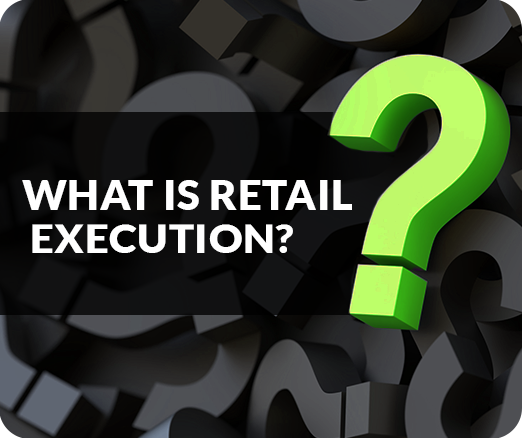
Retail execution refers to the process of implementing and managing various sales, marketing, and promotional activities and strategies within a retail environment to ensure the successful execution of a company's sales and marketing plans. It involves the coordination and implementation of key initiatives to optimize the presence and performance of products (whether existing or new) or services at the point of sale. Retail execution can include in-store merchandising and customer service to inventory management and data analysis.
Essentially, “retail execution” is a fancy way of saying "how well a store is doing its job" regarding how a product lives on the shelves. It's all about ensuring a retailer's products are displayed nicely, in stock, and priced correctly so customers have a great shopping experience and can easily find and purchase the products they want. If a product is not where it is supposed to be or inventory has not been properly accounted for, brands can risk losing valuable sales, revenue, consumers, and brand loyalty.
What are the components of retail execution?
Retail execution typically encompasses several components, including:
- Merchandising: This involves the arrangement and presentation of products within a retail store to maximize visibility, appeal, and sales. It includes tasks such as shelf positioning, product displays, signage, pricing, and inventory management.
- Promotions and Marketing: Retail execution involves the planning and execution of promotional activities to drive sales and attract customers. This may include in-store promotions, discounts, special offers, product demonstrations, and advertising campaigns.
- Sales and Distribution: It involves managing the sales process, including product availability, distribution, and retail replenishment. Retail execution ensures that products are properly stocked, delivered on time, and available to customers when and where they want them.
- Training and Education: Retail execution often involves training and educating retail staff on product features, benefits, and selling techniques. This helps ensure that employees are knowledgeable and equipped to provide excellent customer service.
- Data Analysis and Performance Tracking: Effective retail execution requires monitoring and analyzing POS sales data, market trends, and customer behavior to identify sales and marketing opportunities and optimize strategies. It involves tracking key performance indicators such as sales volume, market share, customer satisfaction, and profitability.
The Benefits of Effective Retail Execution Management
According to various research, most shoppers like to leave a store with a purchase in hand, and approximately 70% of those purchasing decisions are made in-store. Therefore, proper retail execution is critical to a brand’s sales. Shoppers can be easily influenced to purchase another product if an item is out-of-stock, so implementing effective retail execution practices is extremely important to a CPG’s and retailer’s success.
Successful retail execution offers several benefits to CPGs and their retailer partners. Some of the key advantages include:
- Increased Sales: Effective retail execution strategies can lead to increased sales for CPG companies by ensuring their products are prominently displayed, promoted, and readily available to consumers. By optimizing product placement, signage, and promotions, companies can attract more customers, encourage impulse purchases, and drive overall revenue growth. When products are easy to find and access, customers are more likely to purchase them, which can increase revenue for the company.
- Better Brand Awareness: Retail execution management can help improve brand awareness and recognition for CPG companies by ensuring their products are consistently presented and displayed in a way that aligns with the company's branding and promotional strategies. Retail execution focuses on creating a positive and engaging shopping experience for customers. Well-trained staff, informative product displays, and efficient store layouts contribute to a seamless and satisfying customer journey. This leads to increased customer loyalty, repeat visits, and positive word-of-mouth recommendations.
- Improved Inventory Management: Retail execution management can also help CPG companies manage their inventory more effectively by providing near real-time data on product availability, sales trends, and stock levels. This information can help companies optimize inventory levels and reduce waste, improving profitability.
- Enhanced Customer Experience: CPG companies can provide customers with a better shopping experience by ensuring that their products are displayed and stocked properly. This can lead to increased customer satisfaction, loyalty, and repeat business.
In summary, retail execution is critical to the success and growth of CPG companies, as it can help them increase sales, improve brand awareness, optimize inventory management, and enhance the customer experience.
Contact us today to learn how you can improve retail execution with daily harmonized retail sales and inventory data.


